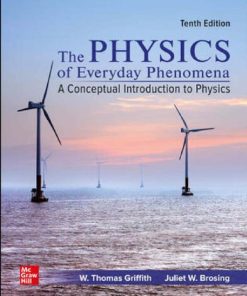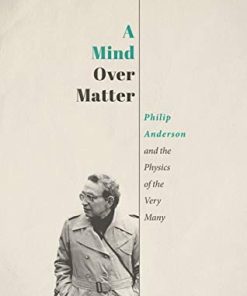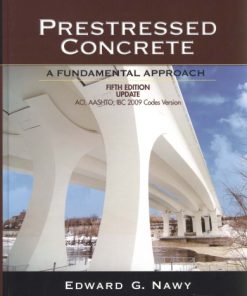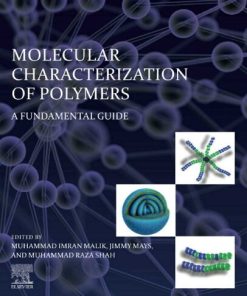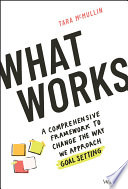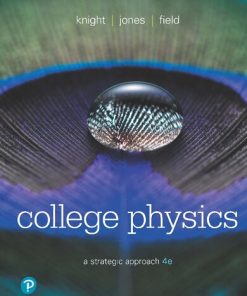A Middle Way: A Non-Fundamental Approach to Many-Body Physics Batterman
$50.00 Original price was: $50.00.$25.00Current price is: $25.00.
A Middle Way: A Non-Fundamental Approach to Many-Body Physics – Ebook Instant Download/Delivery ISBN(s): 9780197568613,0197568610

Product details:
- ISBN-10 : 0197568610
- ISBN-13 : 978-0197568613
- Author(s): Batterman, Robert W.
Robert W. Batterman’s monograph examines a ubiquitous methodology in physics and the science of materials that has virtually been ignored in the philosophical literature. This method focuses on mesoscale structures as a means for investigating complex many-body systems. It challenges foundational pictures of physics where the most important properties are taken to be found at lower, more fundamental scales.
This so-called “hydrodynamic approach” has its origins in Einstein’s pioneering work on Brownian motion. This work can be understood to be one of the first instances of “upscaling” or homogenization whereby values for effective continuum scale parameters can be theoretically determined. Einstein also provided the first statement of what came to be called the “Fluctuation-Dissipation” theorem. This theorem justifies the use of equilibrium statistical mechanics to study the nonequilibrium behaviors of many-body systems.
Batterman focuses on the consequences of the Fluctuation-Dissipation theorem for a proper understanding of what can be considered natural parameters or natural kinds for studying behaviors of such systems. He challenges various claims that such natural, or joint carving, parameters are always to be found at the most fundamental level. Overall, Batterman argues for mesoscale first, middle-out approach to many questions concerning the relationships between fundamental theories and their phenomenological, continuum scale cousins.
Table contents:
1 Introduction
1.1 Philosophy and Foundational Problems
1.2 Autonomy and Fundamentality
1.3 Two-ish Senses of Fundamental
1.4 Hydrodynamic Methods: A First Pass
1.5 Representative Volume Elements
1.6 Fluctuation and Dissipation
1.7 Preview of Upcoming Chapters
2 Autonomy
2.1 Pegs and Boards
2.2 How to Answer (AUT)
2.3 Generalizations
2.4 A Brief Thought Experiment
2.5 Conclusion
3 Hydrodynamics
3.1 Conserved Quantities and Transport
3.2 Correlation Functions
3.3 Linear Response
3.4 Conclusion
4 Brownian Motion
4.1 Introduction
4.2 The Hydrodynamic Equation
4.3 Effective Viscosity in Brownian Contexts
4.4 Brownian Motion and the F–D Theorem
4.5 Conclusion
5 From Brownian Motion to Bending Beams
5.1 Introduction
5.2 Bulk Properties of Heterogeneous Systems
5.3 Conclusion
6 An Engineering Approach
6.1 Introduction
6.2 Schwinger’s Engineering Approach
6.3 Order Parameters, Mesoscales, Correlations
6.4 Multiscale Modeling in Biology
6.5 Conclusion
7 The Right Variables and Natural Kinds
7.1 Introduction
7.2 Woodward on Variable Choice
7.3 The Right (Mesoscale) Variables
7.4 Another Minimal Model Example
7.5 Conclusion
8 Conclusions
8.1 Foundational Problems vs. Methodology
8.2 Autonomy and Heterogeneity
8.3 Brownian Motion and the F–D Theorem
8.4 A Middle-Out/Engineering Methodology
8.5 A Physical Argument for the Right Variables
Bibliography
Index
People also search:
what is a middle way
find a middle way
find a middle way meaning
what does a middle way mean
a middle way synonym
what’s in the middle of the milky way
what is in the middle of a milky way chocolate
You may also like…
Education Studies & Teaching - Education - General & Miscellaneous
MYP Physics: a Concept Based Approach (IB MYP SERIES) 1st Edition
Engineering - Chemical Engineering
A Practical Approach to Chemical Engineering for Non-Chemical Engineers 1st Edition Moe Toghraei
Housekeeping & Leisure - Interior Design & Decoration
Prestressed Concrete A Fundamental Approach 5th Edition by Edward Nawy 0136081509 978-0136081500
Relationships & Lifestyle - Personal Growth & Inspiration





